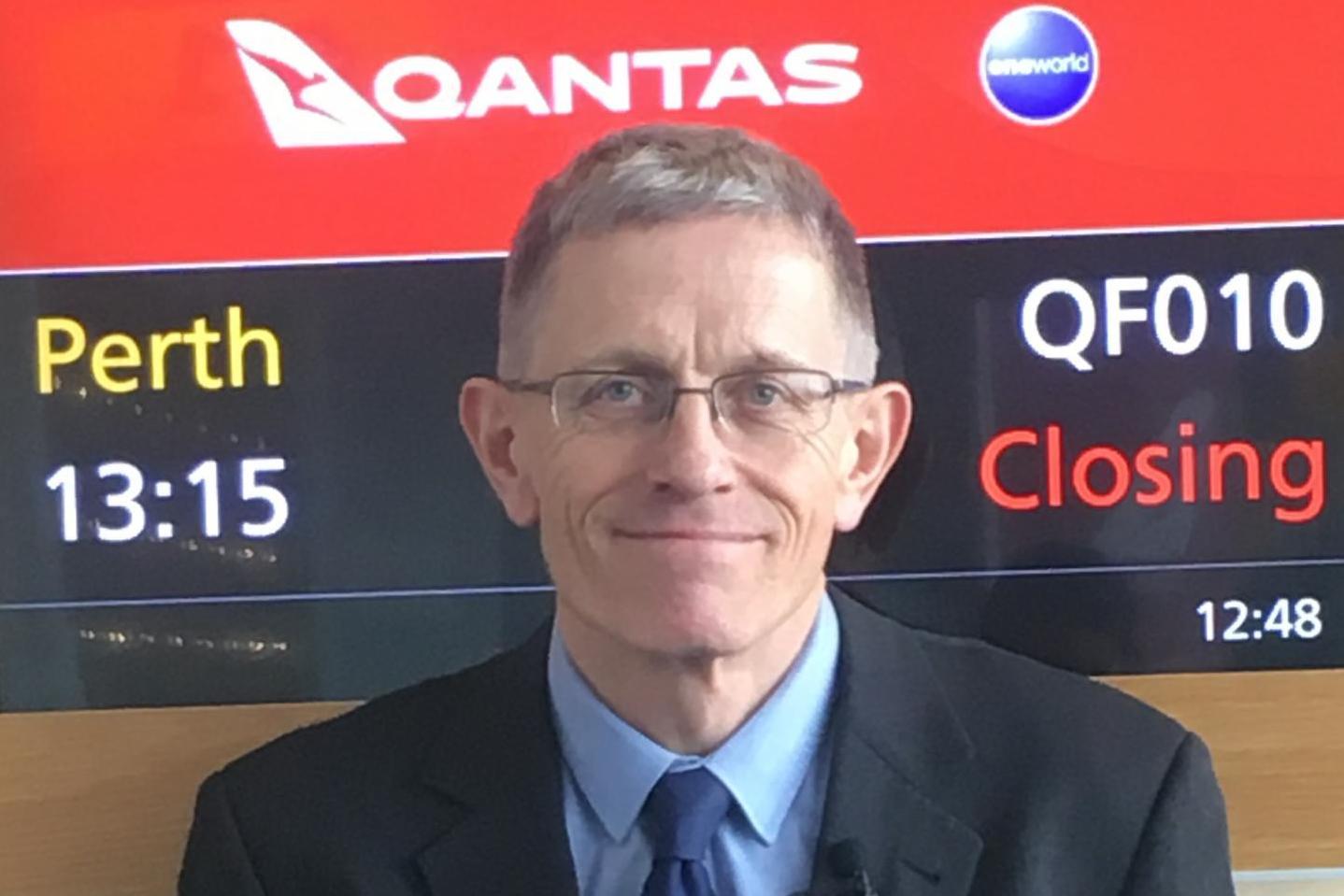The story behind the first ever nonstop commercial flight from UK to Australia
Travellers lunched at Heathrow, dined seven miles high and arrived in Western Australia in time for brunch
Your support helps us to tell the story
From reproductive rights to climate change to Big Tech, The Independent is on the ground when the story is developing. Whether it's investigating the financials of Elon Musk's pro-Trump PAC or producing our latest documentary, 'The A Word', which shines a light on the American women fighting for reproductive rights, we know how important it is to parse out the facts from the messaging.
At such a critical moment in US history, we need reporters on the ground. Your donation allows us to keep sending journalists to speak to both sides of the story.
The Independent is trusted by Americans across the entire political spectrum. And unlike many other quality news outlets, we choose not to lock Americans out of our reporting and analysis with paywalls. We believe quality journalism should be available to everyone, paid for by those who can afford it.
Your support makes all the difference.Seven hours after the last passenger boarded Qantas flight 10 at Heathrow, Dubai came into view.
Hitherto, an Australia-bound traveller on QF10 would be strapped in for landing at the UAE airport, followed by an hour of disconsolate duty-free shopping in the middle of the night while the plane was refuelled for the onward flight to Melbourne.
Instead, QF10 flew directly over Dubai Airport at 37,000 feet. The Boeing 787 Dreamliner would stay aloft for another 10 hours until it reached Perth, Western Australia.
Sunday 25 March 2018 has entered the aviation record books as the day the aviation landscape between the UK and Australia changed.
Qantas has replaced the daily Airbus A380 “SuperJumbo” from Heathrow to Melbourne with a much smaller Boeing 787 “Dreamliner” and changed the flight plan.
Instead of refuelling in the Gulf, the plane flies direct to Western Australia’s capital, with an official distance of 9,009 miles.
It is the first nonstop link between the UK and Australia. Thanks to a 1.15pm departure and an arrival at 1pm local time next day, passengers can have lunch in London, dinner and breakfast at altitude and lunch beside the Indian Ocean.
The “nonstop hop”, scheduled to take 16 hours 45 minutes, is the culmination of almost a century of aviation between the UK and Australia. The first flight in 1919 took 28 days, 40 times longer than the new service.
The lunchtime departure of Qantas flight 10 was accompanied by celebrations at the gate at Heathrow, including someone dressed in a giant kangaroo suit.
All but a handful of the 236 seats on board were filled, which the airline hopes will long continue.
The length of the flight makes it an expensive operation. Even though the 787 is an efficient aircraft, a significant proportion of fuel is consumed carrying fuel for later in the flight. The crewing costs are also heavy. On shorter flights, the 787 operates with two pilots and 10 cabin crew. Because of the long flying time, two extra pilots and two additional cabin crew are carried to ensure all the personnel get some rest.

The route of the maiden flight initially took the aircraft east over Belgium, Germany, Austria and Romania, then south-east across the Black Sea, Turkey and Iran before reaching the Gulf. After crossing the UAE and a corner of Oman, the rest of the journey was over the Indian Ocean.
The flight arrived in Perth 15 minutes ahead of schedule.
QF10, and its inbound counterpart QF9, is not quite the longest passenger flight in the world. Qatar Airways' link between Doha and Auckland covers 9,025 miles, 16 more than the Heathrow-Perth run.
Passengers on the maiden flight were given a certificate signed by the Qantas chief executive Alan Joyce, “entitling them to membership of the rare and elevated order of the nonstop hop”.
Competition is intense between the UK and Australia, and Qantas now has a unique product between London and Perth. British Airways has expressed no interest in joining the Australian carrier on the route.
The giant Gulf airlines - Emirates, Etihad and Qatar Airways - will watch the loads and fares with a keen interest. They are in the “hub-and-spoke” business, the antithesis of the new point-to-point link. Between them, they carry about two-thirds of the traffic between the UK and Perth.
But the numbers involved on the daily Qantas flight each way are just a drop in the intercontinental aviation ocean: fewer than 500 a day.
In addition, the Gulf carriers enable passengers to reach any of the big Australian state capitals - Perth, Adelaide, Melbourne, Sydney or Brisbane - cities with just one stop from Gatwick, Heathrow, Birmingham, Manchester, Newcastle, Glasgow and Edinburgh, and soon from Stansted and Cardiff.
But Qantas does not intend to stop at a single nonstop. Before QF10 departed, Mr Joyce told The Independent that he expects to launch a nonstop London-Sydney link in 2022. “That’s when we think Boeing and Airbus will have an aircraft that can do the operation, and we’re working closely with them to get the aircraft there.”
The flying time from London to Sydney will be three hours longer than the new journey to Perth.

Join our commenting forum
Join thought-provoking conversations, follow other Independent readers and see their replies
Comments